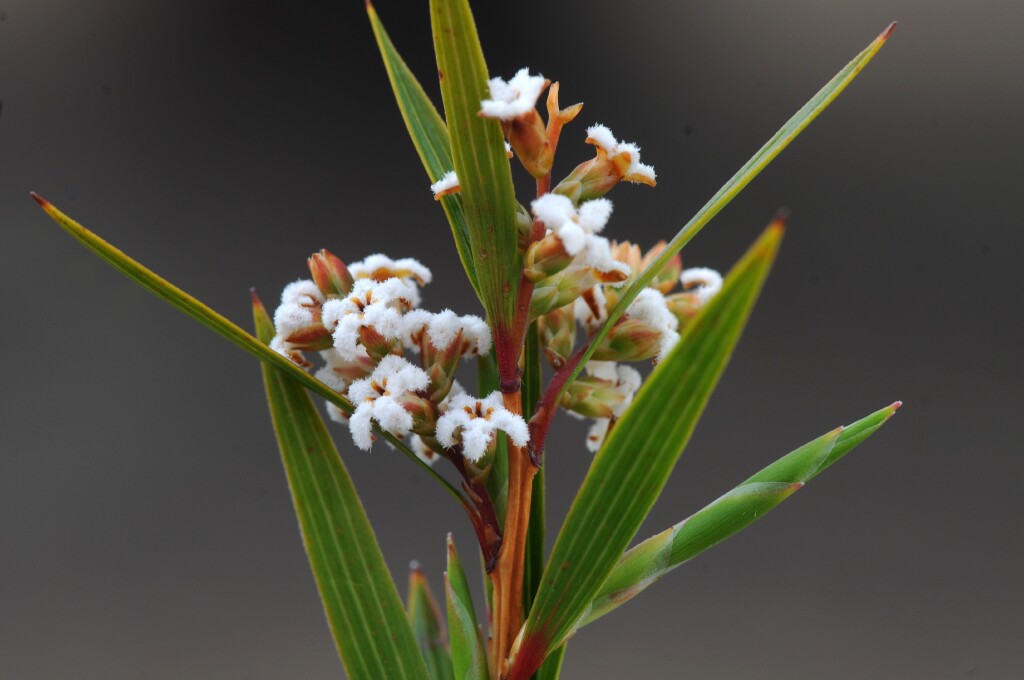Leucopogon
Prostrate shrubs to small trees. Leaves alternate, more or less coriaceous, concolorous or discolorous, the lower surface usually somewhat striate from the 3–several longitudinal (rarely palmate) nerves. Inflorescences terminal and/or axillary, with flowers solitary, or few to many in spikes; individual flowers with a bract and a pair of bracteoles immediately subtending sepals; sepals resembling bracts but larger; corolla lobes valvate in bud, finally spreading to recurved, white-bearded internally (rarely papillose or glabrous); stamens inserted just below lobes; filaments shorter than anthers; anthers with a sterile tip; ovary 2–5(–6)-locular, with 1 ovule per loculus, completely encircled by nectary of 5 lobes, style slender and terete or thickish near base and tapered upwards. Fruit a drupe.
About 200 species (including many undescribed from Western Australia), all but c. 30 endemic in Australia, the remainder extending from Malesia north-west to Indo-China, and south-east to New Zealand.
Previously treated as a larger, heterogenous genus, but recent DNA-based phylogenetic studies suggest relationships are better reflected through the erection of new genera (e.g., in Victoria, Acrothamnus), and the reassignment of some species to an expanded Styphelia (Puente-Lelièvre et al. 2015; Crayn et al. 2020).
Powell, J.M.; Walsh, N.G.; Brown, E.A. (1996). Leucopogon. In: Walsh, N.G.; Entwisle, T.J., Flora of Victoria Vol. 3, Dicotyledons Winteraceae to Myrtaceae, pp. 494–509. Inkata Press, Melbourne.
 Spinning
SpinningCrayn, D.M.; Hislop, M.; Puente-Lelièvre, C. (2020). A phylogenetic recircumscription of Styphelia (Ericaceae, Epacridoideae, Styphelieae). Austral. Syst. Bot. 33: 137–168.
Puente-Lelièvre, C.; Hislop, M.; Harrington, M.; Brown, E.A.; Kuzmina, M.; Crayn, D.M. (2015). A five-marker molecular phylogeny of the Styphelieae (Epacridoideae, Ericaceae) supports a broad concept of Styphelia. Australian Systematic Botany 28: 368–387.



